Making sure you make the right decisions about your pension
During the 2014 Budget announcement, the Chancellor introduced the prospect of far-reaching changes to how you access your pension savings when you retire. These changes were confirmed in the Taxation of Pensions Act 2014. Further changes were also announced in the Autumn Statement on 3 December 2014. In what has been described as the most revolutionary changes to pensions ever, we set out below the basic facts and explain how they might affect you.
The overriding principle is that the freedom granted by these pension changes is good news for all pension savers. However, the increased options could lead to many people making the wrong decisions and paying unnecessary tax, making professional financial advice all the more important.
Your choices at retirement from April 2015
Freedom over how you take your tax free cash (PCLS)
Most people can take up to 25% tax-free cash from their pension. From April 2015 you can either take the tax-free cash all in one go or have a portion of any withdrawals you make paid tax free. So, if, for example, you have a pension fund worth £100,000, you will have the choice of:
- Taking £25,000 tax-free cash all at once, with any subsequent withdrawals taxed as income.
- Making a series of withdrawals over time, receiving 25% of each withdrawal tax free. For instance, if you take lump sum withdrawals of £1,000 a month you would receive £250 of each payment tax free with the rest subject to income tax.
This second option is attractive because it could help you manage your tax liability.
Flexible access from age 55
From April 2015, those aged at least 55 will have freedom over how they take an income from their pension, over and above any tax-free cash. The choices on retirement will be to:
- Take the whole fund as cash in one go.
- Take smaller lump sums, as and when needed.
- Take a regular income.
The latter could be via income drawdown, where you draw directly from the pension fund which remains invested, or via an annuity, where you receive a secure income for life.
Any withdrawals in excess of the tax-free amount will be taxed as income at your marginal rate. So, if you are a basic-rate (20%) taxpayer, any income you draw from your pension will be added to any other income you receive (e.g. your salary). This could push you into the higher (40%) or even top-rate (45%) income tax bracket.
Choosing to take the pension out in stages, rather than in one go, could help you manage your tax liability. It should also be possible to take the tax-free cash straightaway and the taxable income via income drawdown at a later date.
Restrictions on how much you can contribute to pensions
Pension contributions are subject to a £40,000 annual allowance and specific contribution rules. This will continue to be the case after April 2015.
However, if after April 2015 you make any withdrawals from your pension in addition to any tax-free cash, contributions to defined contribution plans are likely to be restricted to £10,000.
55% pension “death tax” to be abolished
At the moment it’s normally only possible to pass a pension on as a tax-free lump sum if you die before age 75 and you have not taken any tax-free cash or income. Otherwise, any lump sum paid from the fund is subject to a 55% tax charge.
From April 2015 this tax charge will be abolished and the tax treatment of any pension you pass on will depend on your age when you die.
If you die before age 75, your beneficiaries can take the whole pension fund as a lump sum or draw an income from it tax free, when using income drawdown. Dependants (but not other beneficiaries) can also choose to buy an annuity, in which case the income will be taxed.
If you die after age 75, your beneficiaries have three options:
- Take the whole fund as cash in one go: the pension fund will be subject to 45% tax. However, it has been proposed this should be changed to the beneficiary’s or beneficiaries’ marginal rate of income tax from 2016/17.
- Take a regular income through income drawdown or an annuity (option only available to dependants): the income will be subject to income tax at your beneficiary’s or beneficiaries’ marginal rate.
- Take periodical lump sums through income drawdown: the lump sum payments will be treated as income, so subject to income tax at your beneficiary’s or beneficiaries’ marginal rate.
This means that from April 2015, a pension can not only support those in retirement but could also enable one generation to support the next and beyond.
Retirement ages to increase
The age at which you can draw your pension is currently 55. This is set to increase to 57 from 2028 and, from then, will increase in line with the rise in the State Pension age, albeit remaining 10 years below.
Income Drawdown carries significant investment risk as your future retirement income remains totally dependent on your pension fund performance. Pension Drawdown may only suit a limited number of people.
HM Revenue and Customs practice and the law relating to taxation are complex and subject to individual circumstances and changes which cannot be foreseen.
Content reproduced by permission of Openwork Ltd.

